- Home
- Michael Phillips
Stranger at Stonewycke
Stranger at Stonewycke Read online
© 1987 by Michael R. Phillips and Judith Pella
Published by Bethany House Publishers
11400 Hampshire Avenue South
Bloomington, Minnesota 55438
www.bethanyhouse.com
Bethany House Publishers is a division of
Baker Publishing Group, Grand Rapids, Michigan
www.bakerpublishinggroup.com
Ebook edition created 2016
All rights reserved. No part of this publication may be reproduced, stored in a retrieval system, or transmitted in any form or by any means—for example, electronic, photocopy, recording—without the prior written permission of the publisher. The only exception is brief quotations in printed reviews.
Library of Congress Cataloging-in-Publication Data is on file at the Library of Congress, Washington, DC.
ISBN 978-1-4412-2978-6
This is a work of fiction. Names, characters, incidents, and dialogues are products of the author’s imagination and are not to be construed as real. Any resemblance to actual events or persons, living or dead, is entirely coincidental.
Cover design by Eric Walljasper
Judith Pella is represented by The Steve Laube Agency
With love and thanks to my parents
John and Norma Pella
Contents
Cover 1
Title Page 3
Copyright Page 4
Dedication 5
Introduction 11
1. Lady Margaret 19
2. Stonewycke 26
3. The Sinner and the Serpent 33
4. Skittles 44
5. A Scheme Takes Shape 55
6. A Festive Evening at Stonewycke 61
7. Allison 72
8. Grave Words 77
9. To Catch a Thief 80
10. Flight 92
11. Home Again 99
12. A New Scheme 107
13. A Suspicious Caller 117
14. Errand Day in Port Strathy 120
15. Stranger in a Strange Land 125
16. Introductions 129
17. The Lady and the Sharp 133
18. Disclosures 141
19. Conversations in the Bluster ’N Blow 151
20. On the Sea with Jesse Cameron 159
21. Allison in New Town 170
22. The Door Is Opened 175
23. Another Stranger in Town 185
24. Visitors 189
25. The Greenhouse 196
26. The Stable 203
27. Heated Words 214
28. The Hunt Begins 220
29. Braenock Ridge 227
30. Telegram from the Fox 232
31. An Unexpected Invitation 236
32. Glasgow Red Dog 244
33. The Party 252
34. The Drive Home 265
35. Back to Stonewycke 276
36. Grandpa Dorey 285
37. Unexpected Guest 293
38. Confrontation 300
39. The Healing Rain 309
40. Tragedy 313
41. Rescue 318
42. New Dawn 325
43. The Prayers of the Righteous 331
44. Ramsey Head Again 334
45. Crossroads 342
46. The Lady and the Seeker 346
47. A Deal at the Bluster ’N Blow 353
48. Digory’s Clues Unfold 359
49. The Turn 366
50. The Confession 371
51. Abduction 379
52. The Abandoned Cottage 382
53. Looking Death in the Eye 388
54. The Stretching of Allison’s Faith 392
55. The Fate of the Bonnie Flora MacD 396
56. The Guest of the Admiral Mannheim 399
57. The Legacy Continues 403
About the Authors 411
Fiction by Michael Phillips 412
Books by Judith Pella 413
Introduction
To man’s undiscerning eye, the generations come and go, fading one into the other, ultimately passing from the face of the earth. As the march of history progresses, only the land remains, while men, women, and children grow, live, and die and then return to the earth from which they came, seemingly swallowed into nothingness by a vast uncaring universe.
In reality, however, the land is the stage upon which a drama of unparalleled eternal significance is played within the hearts of every man and woman who sets foot upon it. Unseen by those around us, often uncomprehended by ourselves, the choices and values of our earthly lives mold and determine the character we take with us into the next life.
From the time the Picts settled in northern Scotland in the seventh century, until the region was overrun by the Vikings in the ninth, and then settled throughout the following centuries by the Scots, the estate known as Stonewycke became a symbol of the enduring quality of the land. When the castle of that same name was built by Andrew Ramsay in the 1540’s, his prayer was that the estate would stand as a sentinel in the north to God’s goodness. His prayers for the generations who would follow him in the Ramsay line resulted in blessings and prosperity to the family throughout the next two and a half centuries, finding special fulfillment in the righteousness of his descendant Anson Ramsey in the early nineteenth century. (The spelling of the family name was changed in 1745 to Ramsey.)
But as the blessings of God follow generational lines, so also do the consequences of wrongdoing and ungodly choices. The self-will and personal greed of Ross Ramsay, brother of Adam de Ramsay, baron of Banff, also became an intrinsic factor in the family bloodline—a black stain which, unknown to Andrew, his descendant, was too strong to be rooted out entirely by the prayers that followed the stigma.
Hence, though Andrew’s blood was strong in Anson, Ross’s found fertile soil in Anson’s sons, whose father suffered the tormenting fate of watching his own offspring turn away from the God of their fathers. The family continued to be infused by new blood; while the choices and prayers of each succeeding generation breathed new life into the heritage of godliness, at the same time self-interest strengthened the forces which opposed those prayers. The grafting into the family of James Duncan in 1845 threatened to eradicate altogether by greed and ambition what Andrew and Anson had prayed so diligently for.
Yet in the mystery of God’s purpose, in James’s own daughter rose the strong desire to give her life to the Almighty plan. Such yielding, however, never comes easily. Battle raged within the soul of young Maggie Duncan—the conflict found in her Ramsey bloodline was illustrative of the essential human condition. Indeed, the future of the family’s heritage was at stake. Her laying down of self, and her prayers for the future of the Ramsey/Duncan lineage, rekindled for a new era the prayers begun through her ancestors, enabling the blessings of God to pass to new generations through her granddaughter Joanna.
Thus the legacy continued into the second millennium of settlement on the northern Scottish coast. And with the passage of time the tempo of life accelerated. The twentieth century brought many changes to the inheritors of the once-magnificent estate known as Stonewycke. In Great Britain the twentieth century brought the end of the Victorian Era with the Queen’s death in 1901. Monarchies had come and gone countless times before, but this transfer of power was more far-reaching in its impact on the world than a mere changing of the guard from mother to son in London. A thorough-going transfiguration, the roots of which had sprouted during Victoria’s lifetime, was in the process of turning society inside out.
Not only was the entire political framework of the world being revamped; cataclysmic social change, affecting every level of society, was sweeping through the once-proud center of the mighty British Empire. The growth of the Labor Party overhauled Parliament’s decision-making process. Morals an
d literature changed dramatically. The spiritual foundation-stones of Victoria’s administration eroded. Socially, economically, politically, and spiritually old norms were being thrown out. Technological breakthroughs, given momentum by the Great War against Germany, found their way into the daily lives of countless millions on both sides of the Atlantic—automobiles, electricity, airplanes, radios, urban growth, new factories, and the wild music and fashions of the 1920s.
These were profound changes. The world in the first two decades of the twentieth century was a world rushing to modernize itself. The world of Maggie’s childhood was a world as distinct from that in which Joanna would raise her daughter, as the horse was distinct from the automobile. Between 1900 and 1930 stretched a gulf, not of decades but of centuries.
Perhaps most significant for the northern shires of Scotland during this time was the final demise of the old feudal and manorial systems of land management, which had been dying a slow death for centuries. Once-proud estates gradually were sold off in parcels, were apportioned and split between heirs, or went bankrupt as their owners desperately tried to keep vast holdings together with insufficient capital. Not only economics, but social outlook had changed. While titles and nobility still mattered a great deal in Britain, they were coming to matter less. The working classes could now vote and buy land and improve their lot. The separation between the workers and the aristocracy was much narrower. No longer were the fortunes of the workers solely bound up in their dependence on the landowners and lairds who owned their houses, their lands—sometimes, it seemed, their very souls.
With such total dependency gone, the economic benefits to local lairds of the surrounding crofters and poor tenant farmers was also gone. Only the landowners who were able to cope with the changes time had brought survived in their positions of stature. They forged new, more equitable relationships with their subjects, and found other means to support their estates rather than by the blood and toil of the peasantry.
Many estates were not able to survive intact. Others, like Stonewycke, faced the new times by adapting to them rather than trying to stem the tides of change. With a wisdom supernaturally inspired, Anson Ramsey drew up a transfer document for a time which would come years after him, transferring a large portion of the Stonewycke estate to the people who lived on the land. Anson’s transfer turned out to be the salvation of the proud Ramsey heritage. For in that magnanimous act was solidified a bond between the people of Stonewycke and its nobility, unique among such estates—a bond of mutual love that would see mighty Stonewycke, and all those bound to it, through years of change and regeneration.
Quietly, invisibly, the hand of God is always at work. Although we may see only a narrow individual perspective of His actions, the purpose of God goes on far beyond our limited understanding. In the Old and New Testament, God works through the generational flow of family and nation; both sin and righteousness sow seeds and harvest fruit into succeeding generations. Jesus himself came, not as a mere individual, but as a man born into the uninterrupted flow of the history of God’s people. Son of God, Son of Man, Son of David, He brought God’s salvation to the world through the heritage of family, through the legacy of man’s ancestry and ancient birthright as the creation of our Father in heaven.
Twentieth-century mentality is often based on the present; we live in a vacuum of now. Yet every life is the result of a series of choices and crossroads—not only ours, but those of our ancestors for generations behind us. In the present, as in the past, each individual holds a key to the future. We stand at the crossroads of our personal histories, and the decisions we make set into motion values and attitudes that affect not only our own development as men and women made in the image of God, but the choices and decisions that will face our descendants for generations to come.
The Stonewycke saga, then, as it passes into the middle of the twentieth century, is a saga of those human choices, of the struggles of men and women to yield to the godliness to which all are called, while resisting the stain of evil that is passed down through the blood of our ancestors. It is a saga of the land, of a family, of righteousness and blessing passed down through the years as, in certain generations, the forces of good or the forces of evil gain the upper hand. And always the prayers of righteous men and women who have come before stand in the balance.
The Stonewycke saga is the story of God’s work through the generations of one particular family. As the prayers of godly men and women from early in that family’s history weave their way silently into the lives of future descendants, new strains of life (through such men as Ian and Alec) are grafted into the family tree just as the Gentiles were grafted into the family of God, further strengthening and solidifying God’s purpose.
Stonewycke—as a home, as an estate, as a family seat—symbolizes that eternal quality of continuing life through the generations of the Ramsey and Duncan clan. Through the righteous prayers of Andrew and Anson Ramsey, and then Maggie Duncan, followed by Joanna MacNeil, the life of God moves through the generations like seeds which fall to the ground and are covered up and lie dormant—perhaps for many years—yet retain their power of growth and inherent life, waiting for the moment when the proper combination of sun, rain, and warmth sprouts them to life once more.
Though that essential life all but disappeared from the Ramsey clan during some of its darker years, the life hidden below the surface was waiting to sprout. That seed of righteousness, Anson Ramsey’s transfer document, was unearthed by Anson’s great-granddaughter Maggie, whose spiritual eyes were opened largely through the influence of a humble groom named Digory MacNab. Even then, the transfer document, and the very inheritance of Stonewycke itself, disappeared during the years of Maggie’s lonely sojourn in America. However, the purposes of God are never lost, and through Maggie’s own granddaughter Joanna, the life of Stonewycke blossomed and came to fruition once more.
The heritage continues, passing gradually from one generation to the next, with the hand of God infusing life through the answered prayers of the righteous. Man can never tell what methods God will use, nor when the fulfillment of prayers long silent will come. But God’s purposes are always accomplished. The prayers of the righteous resound through the heavens, awaiting the moment when their fulfillment is at hand.
Thus, the Stonewycke legacy lives on, and moves into the future. And as it does, those of a new generation in the Ramsey/Duncan clan, and those who will be grafted into it, are imbued with a life which is given strength through the prayers and obedience of those who have come before. The only question remains: to which of the strains of their heritage will they yield their allegiance?
As the decisions surrounding that question are daily made, the future of the Stonewycke legacy is determined.
The kingdom of heaven is like a treasure hidden in the ground. When a man found it, he hid it again, and then in his joy went and sold all he had and bought that field.
Matthew 13:44
1
Lady Margaret
The recent rains lent an invigorating sparkle to the clean northern landscape. White caps on the lapping dark green waves sharpened into crisp focus, and on the horizon the sapphire of the sea and the azure blue of the sky met like a narrow line on an artist’s canvas.
Lady Margaret Duncan, heiress and matriarch of the centuries-old Scottish estate of Stonewycke, took a deep breath of the tangy salt air as if she fully expected it to rejuvenate her aging form. In reality, however, she cared little to push back the years. That process was reserved for those whose memories harbored discontent. She had come to savor the years as treasures, quietly at peace with the flow of her life, and with the aging it brought. The passage of time added a richness nothing else could possibly bring, the fulfillment of all that had come before. How could she ever want to go back?
She paused for a moment in her casual stroll along the beach to watch a white-winged gull swoop swiftly down toward the water. It skimmed the glistening surface for a mere second, then arc
hed again into the sky, its quest unsuccessful. Yet it seemed not to mind. The silvery-white bird winged in a widening circle overhead until it once again spotted a potential prey.
But Lady Margaret did not witness the conclusion of the hunt. Her attention instead skipped northward, toward the horizon, where two fishing boats had appeared and were now heading in the direction of the harbor. They must have sailed immediately after yesterday’s storm had abated. After a night at sea they were now on their way home. She wondered if the catch had been a good one.
Ah, yes, she was content, at home on the beach she had loved since childhood, the place she delighted in more than anywhere else. This was her Scotland, the country of her ancestors; her Stonewycke, the beloved land of generation upon generation of her own family. It was, she sometimes thought, as if God had created them just for her. Perhaps in a sense He had. For had she been the only human being in existence, He would just as fully have lavished upon her the beauty of His boundless creation, the wonder of His love.
That thought, as it had many times in the past, brought a tear to Lady Margaret’s eye. The tears flowed more easily now than when she was young. A hard shell had surrounded her heart then, a shell which God had been able to break only by sending her miles from her homeland. The wilderness years across the sea had been painful, not only for her but also for her husband; the forgiveness that God had sought to implant within their hearts had not taken root easily in the soil of their independent spirits. But throughout the years of their sorrow, confusion, and aloneness, the Lord’s hand upon them had never faltered.
How faithful He had been to her and Ian! If only they had been able to grasp the larger scope of God’s plan for them sooner! Yet how could they, in the midst of their temporal suffering, perceive that often God’s infinite answers to our finite prayers reach their victorious fulfillment only through His work in generations yet to come? As His ways are higher than our ways, so is the inexhaustible depth of His plan for reconciliation beyond the limited vision of our earthbound eyes.

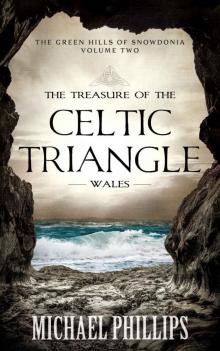 The Treasure of the Celtic Triangle- Wales
The Treasure of the Celtic Triangle- Wales From Across the Ancient Waters- Wales
From Across the Ancient Waters- Wales Hell & Beyond
Hell & Beyond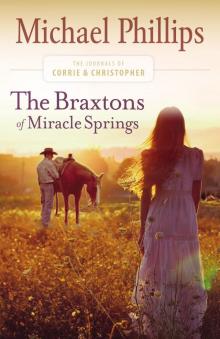 The Braxtons of Miracle Springs
The Braxtons of Miracle Springs Angel Harp: A Novel
Angel Harp: A Novel The Russians Collection
The Russians Collection Treasure of the Celtic Triangle
Treasure of the Celtic Triangle Miss Katie's Rosewood
Miss Katie's Rosewood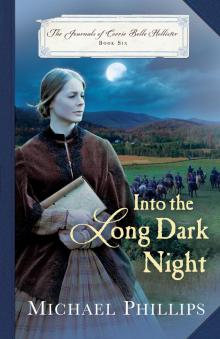 Into the Long Dark Night
Into the Long Dark Night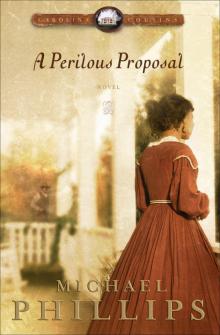 A Perilous Proposal
A Perilous Proposal A Place in the Sun
A Place in the Sun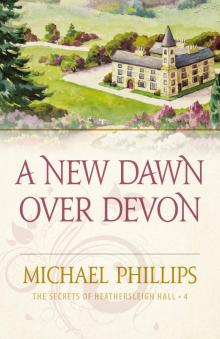 A New Dawn Over Devon
A New Dawn Over Devon Shadows over Stonewycke
Shadows over Stonewycke The Color of Your Skin Ain't the Color of Your Heart
The Color of Your Skin Ain't the Color of Your Heart A Home for the Heart
A Home for the Heart A New Beginning
A New Beginning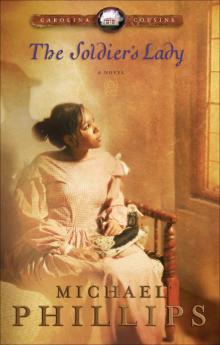 The Soldier's Lady
The Soldier's Lady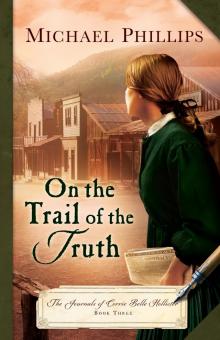 On the Trail of the Truth
On the Trail of the Truth Robbie Taggart
Robbie Taggart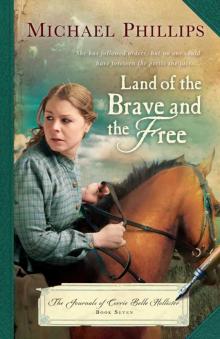 Land of the Brave and the Free
Land of the Brave and the Free The Inheritance
The Inheritance The Treasure of Stonewycke
The Treasure of Stonewycke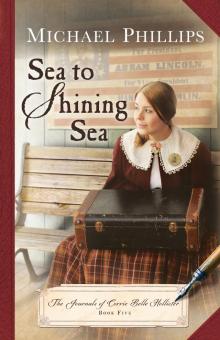 Sea to Shining Sea
Sea to Shining Sea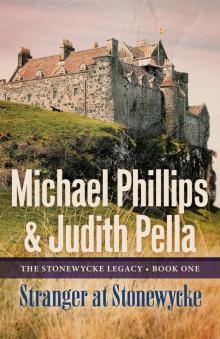 Stranger at Stonewycke
Stranger at Stonewycke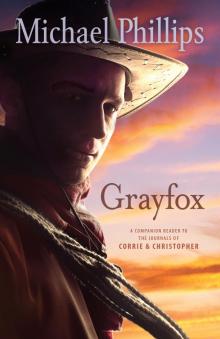 Grayfox
Grayfox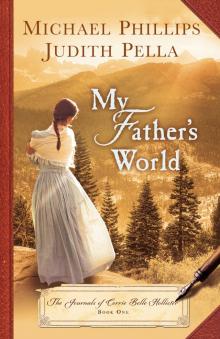 My Father's World
My Father's World Wayward Winds
Wayward Winds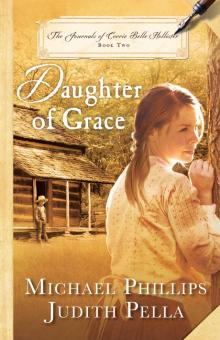 Daughter of Grace
Daughter of Grace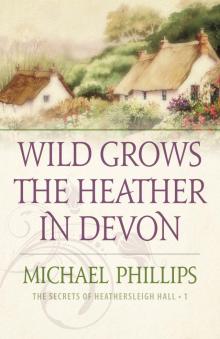 Wild Grows the Heather in Devon
Wild Grows the Heather in Devon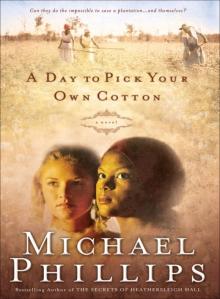 A Day to Pick Your Own Cotton
A Day to Pick Your Own Cotton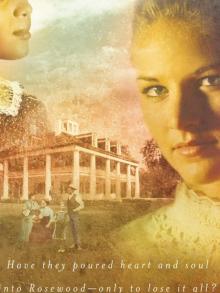 Together is All We Need
Together is All We Need The Cottage
The Cottage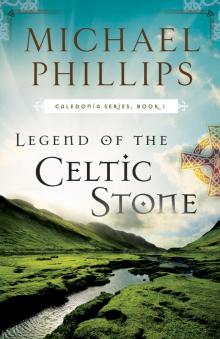 Legend of the Celtic Stone
Legend of the Celtic Stone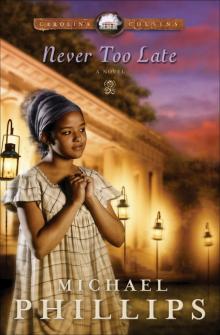 Never Too Late
Never Too Late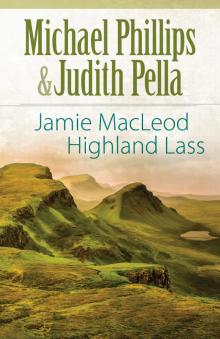 Jamie MacLeod
Jamie MacLeod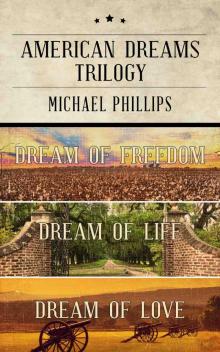 American Dreams Trilogy
American Dreams Trilogy Heather Song
Heather Song From Across the Ancient Waters
From Across the Ancient Waters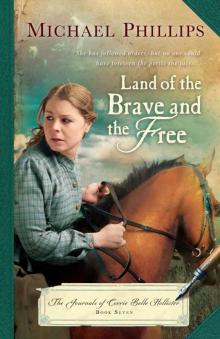 Land of the Brave and the Free (Journals of Corrie Belle Hollister Book 7)
Land of the Brave and the Free (Journals of Corrie Belle Hollister Book 7)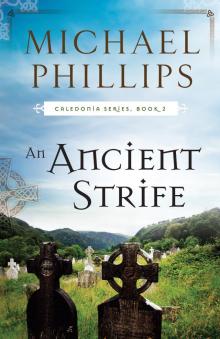 An Ancient Strife
An Ancient Strife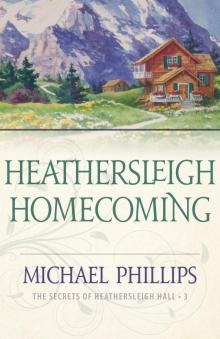 Heathersleigh Homecoming
Heathersleigh Homecoming